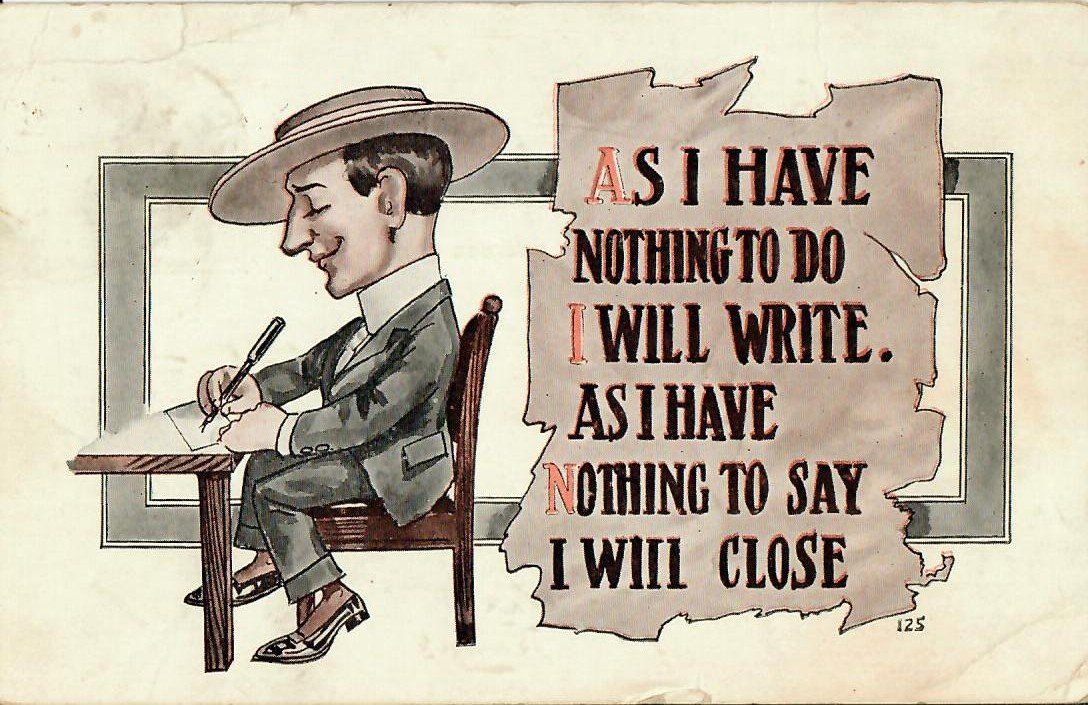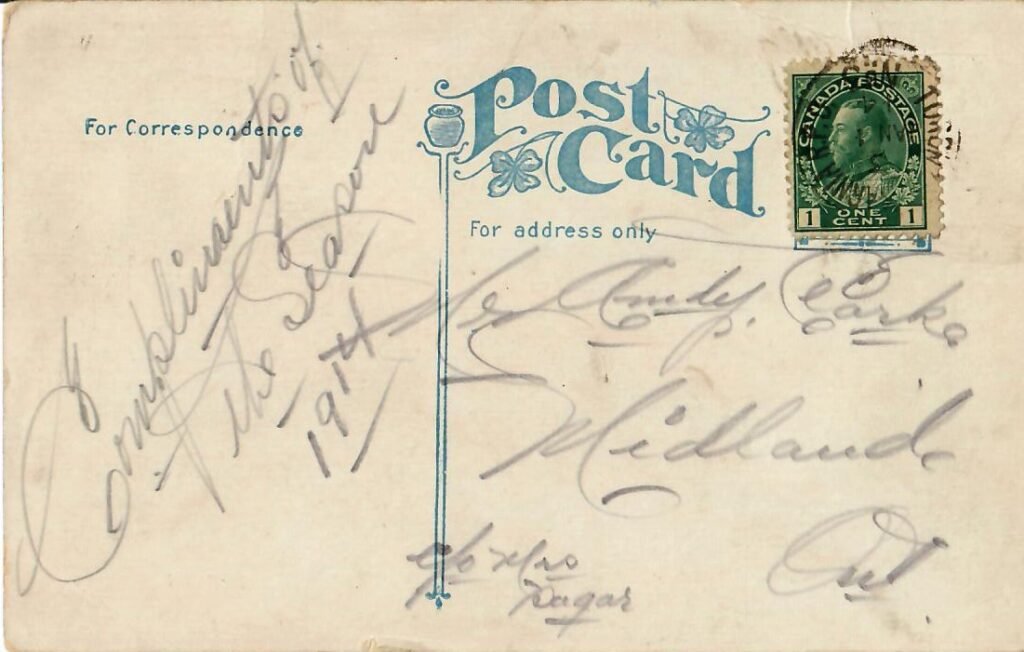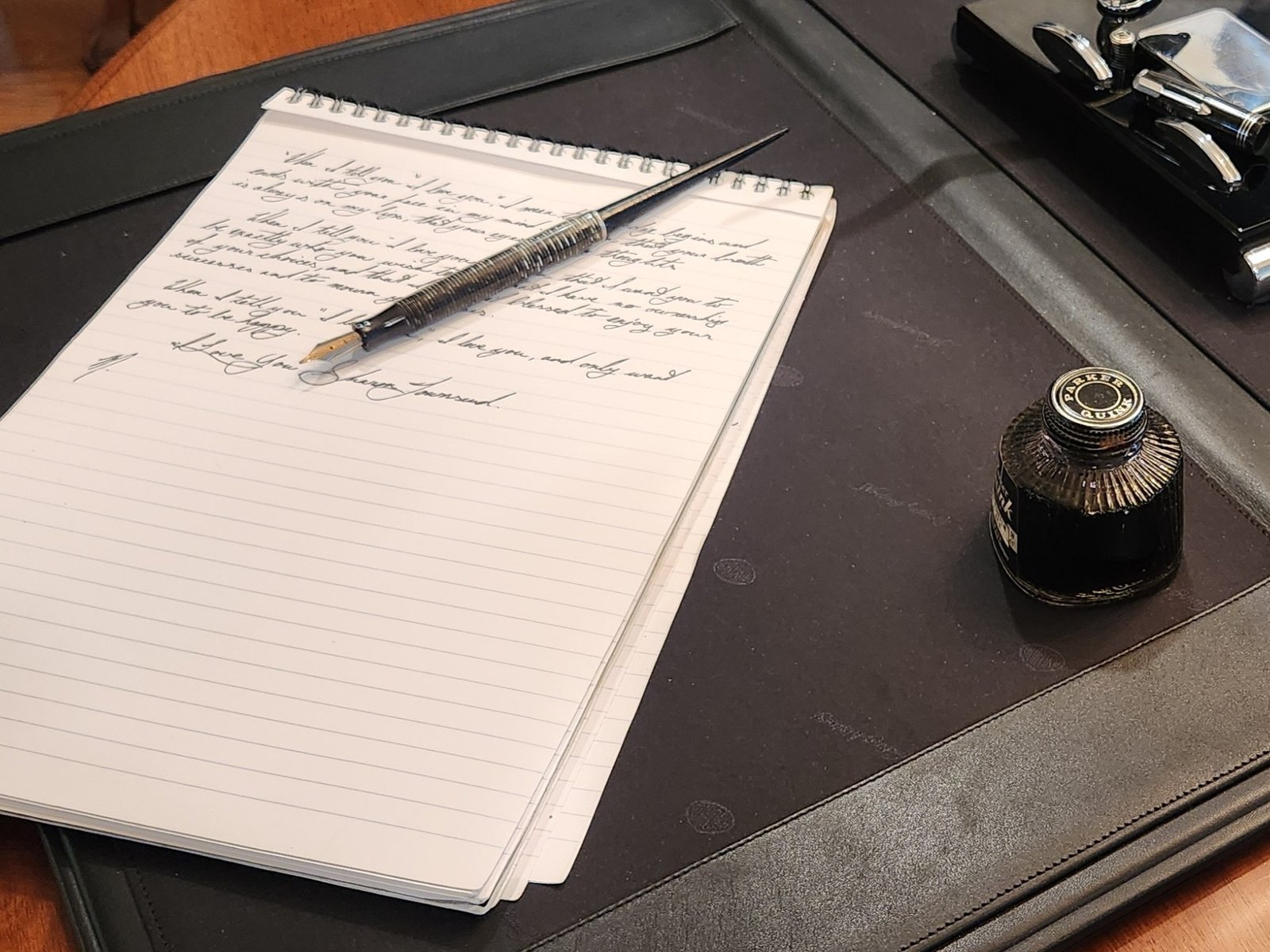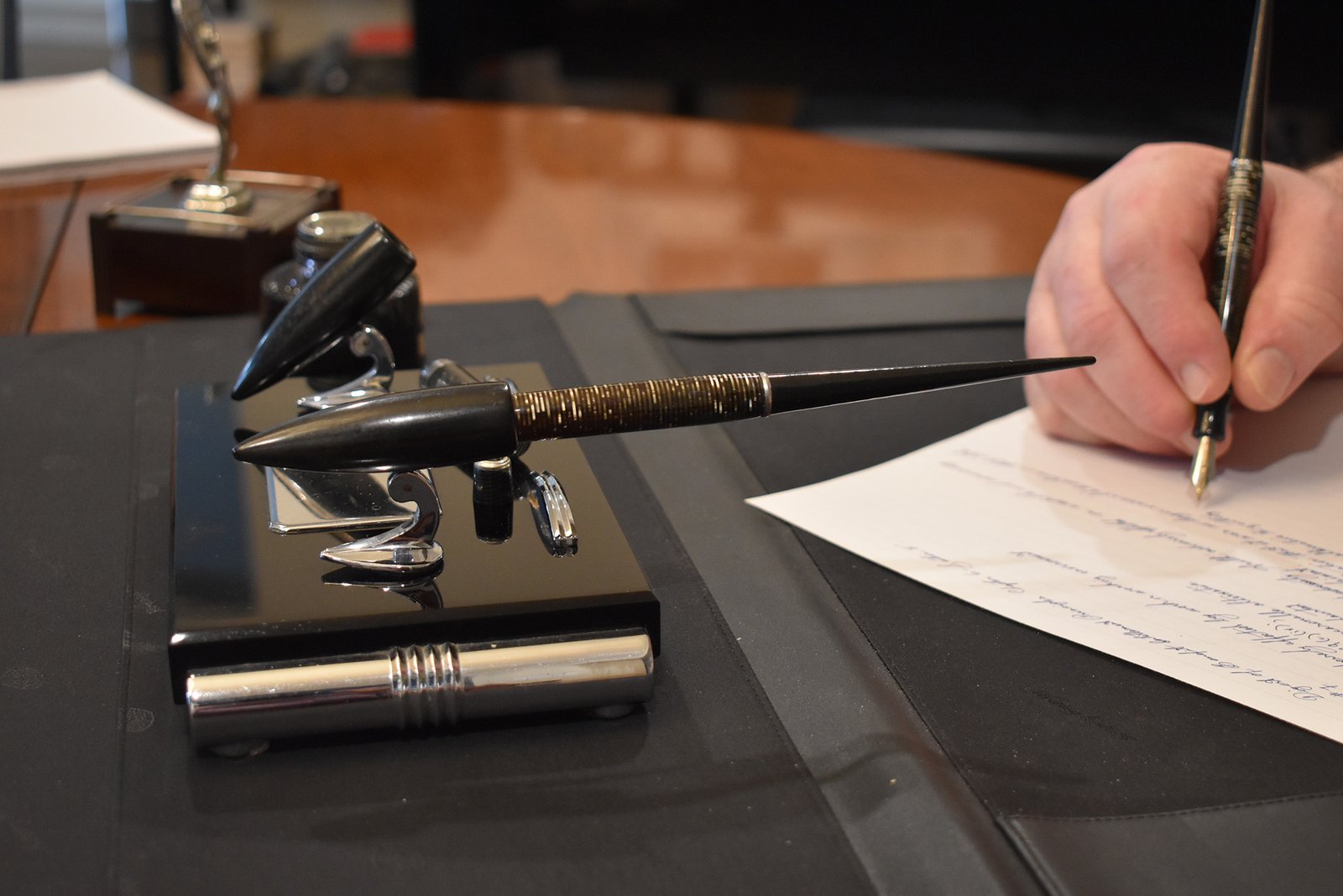
Many of my clients wax poetic about the “mystique” of the fountain pen; about its character, expressiveness and je ne sais quoi. Blah, blah, blah… We have elevated the most pedestrian and antiquated of communication into some ritualistic device that somehow brings the user into communion with the magic of the heavens. As though we stand with every conceivable muse leaning over us to whisper the next great literature that will take the world by storm.
I have an old postcard that says “As I have nothing to do, I shall write. As I have nothing to say, I shall close.” This cute early 20c. postcard illustrates what many of us experience when we sit before a ream or three of carefully selected handmade, organic, sustainable hemp paper and fill an elegant stylo with some amazing ink flown in express by pixies from never-never land, only to be completely blank; bereft of even the most trite expression of our suddenly vacant mind.

I inevitably begin humming a tune many of us oldsters would recognize from some famous cat food commercial from our youth.
And then, I consider a 1940’s fountain pen once brought to my table at a now defunct but fondly remembered pen shop here in my hometown of Vancouver, BC.
A fellow comes in as I am seated ensconced in old English oak and tobaccos fidgeting with some decrepit piece that I am restoring to useability, and he presents me with an azure pearl Parker Vacumatic from the mid 1940’s, made in Canada. He relays a story about his grandfather who passed some years ago and this was found in an old box of desk junk. The fellow, likely in his mid 30’s tells me he had been hanging onto it and didn’t know until a few days before that I might be of assistance. I described to him, as I often do, that this common utilitarian device had been well used, but had suffered no major damage and could be brought to full operation with little expense and some care. I also told him that the difficulty he was having with it when he dipped the pen to test it, was that his grandfather had used it a great deal and the nib had been worn to what was likely perfection for his grandfather’s hand.
His grandfather was a writer for a prominent local newspaper back when newspapers were in their heyday. I told him that I could make that pen look like it had just come from his grandfather’s pocket. He asked me to make it look as good as I could, but “Don’t remove the bite marks”… you see, his grandfather was prone to a measure of olfactory expression while contemplating a particularly difficult passage. Now, if he wanted that pen to write, without altering the nib profile in any way, he would have to adjust his hand to a reasonable imitation of his late grandfather. A piece of his grandfather remains echoing in his hand now.
And so it is with vintage. Every vintage pen has a story and, if it has been used by someone close to you or someone who you have had a relationship with, it carries a piece of them for you to treasure and appreciate. Sometimes it’s toothmarks, sometimes it’s a softly worn nib, or an engraving, but it is always personal.
So, when we write, we have time to consider the pen, the paper, the ink, and that may be enough mystery. Maybe the mystique is the alchemy of all those ingredients, and the philosopher’s stone is our own history.
Anyway we look at it, from Aeschylus to Atwood, the tools are not novel, but there is indeed a mystique, and isn’t a little slice of that what we are looking for?
More From the Blog
Chapter Un
One of the most common questions I am asked, just after: “Are you any relation to Mike?”
Chapter Duh
Some twenty odd years ago, I was walking with my spouse along south Main Street, Vancouver, and we came upon a peculiar shop, [...]
The Mystique of the Fountain Pen
Many of my clients wax poetic about the “mystique” of the fountain pen; about its character, expressiveness and je ne sais quoi. Blah, [...]
CATEGORIES
TAGS

